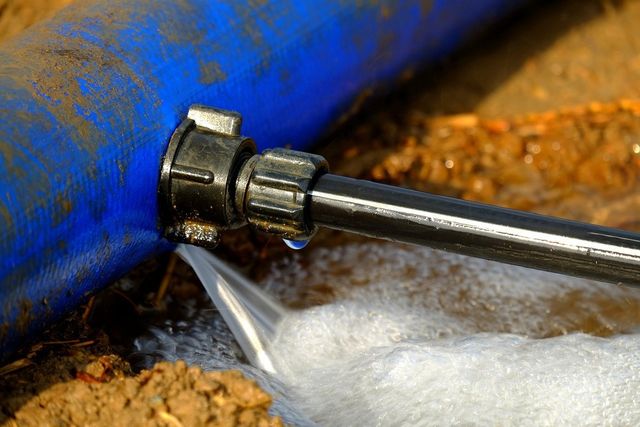What're your thoughts and feelings about Finding hidden leaks?

Early detection of dripping water lines can reduce a prospective catastrophe. Some little water leaks may not be noticeable.
1. Analyze the Water Meter
Every house has a water meter. Examining it is a guaranteed way that helps you uncover leaks. For beginners, shut off all the water sources. Ensure no one will certainly flush, make use of the tap, shower, run the cleaning machine or dish washer. From there, most likely to the meter and watch if it will transform. Because nobody is utilizing it, there need to be no activities. That shows a fast-moving leakage if it relocates. If you detect no changes, wait a hr or 2 as well as check back once more. This indicates you might have a slow-moving leakage that could even be below ground.
2. Examine Water Usage
Evaluate your water bills and also track your water usage. As the one paying it, you ought to discover if there are any type of disparities. If you identify sudden changes, in spite of your usage coinciding, it implies that you have leakages in your plumbing system. Keep in mind, your water bill must drop under the same variety every month. An abrupt spike in your costs suggests a fast-moving leakage.
At the same time, a stable rise monthly, despite having the same routines, reveals you have a slow leakage that's likewise gradually rising. Call a plumber to extensively check your building, especially if you feel a warm location on your flooring with piping underneath.
3. Do a Food Coloring Test
When it comes to water usage, 30% comes from toilets. If the shade in some way infiltrates your bowl during that time without flushing, there's a leakage in between the storage tank and bowl.
4. Asses Outside Lines
Do not forget to examine your outside water lines as well. Ought to water leak out of the link, you have a loose rubber gasket. One tiny leak can waste loads of water and increase your water expense.
5. Analyze the circumstance and also inspect
Home owners ought to make it a behavior to check under the sink counters as well as also inside cabinets for any type of bad odor or mold and mildew development. These two warnings suggest a leakage so prompt attention is needed. Doing regular evaluations, also bi-annually, can save you from a major trouble.
Examine for stainings as well as deteriorating as a lot of pipelines as well as devices have a life span. If you presume leaking water lines in your plumbing system, don't wait for it to escalate.
Early discovery of dripping water lines can alleviate a prospective catastrophe. Some tiny water leaks might not be noticeable. Examining it is a proven method that helps you discover leakages. One little leakage can squander loads of water and spike your water costs.
If you presume leaking water lines in your plumbing system, don't wait for it to rise.
How to Know If Your Home Has a Hidden Leak
Water Meter Reveals Inexplicable Water Usage
If you’d like to test whether or not there’s a leak somewhere in your home, you can do this using your water meter. Here is how to conduct the test:
Don’t use any water in your home for at least 30 minutes; this also means not turning on faucets or water-using appliances.
Go outside, and check your water meter for activity.
If your water meter shows that there was activity, even though no one was using any water, this proves that there is a leak in your home.Visible Mold or Mildew Growth
Leaks behind walls create moist, dark environments that allow mold and mildew to grow and thrive. Eventually, you might see mold growth forming on the wall closest to a hidden leak.
If mold is growing in an area that receives a high amount of moisture, such as a bathroom, it may simply be an indication that better ventilation is needed. However, if you see mold growth on a wall or the ceiling in an area where you would not expect, you probably have a hidden leak.
Musty, Mildew Odor
Sometimes you might not be able to see the mold or mildew that is growing as a result of a leak. However, the smell can give the problem away just as easily. If you catch a whiff of something musty, there’s a good chance that old water is collecting somewhere in your home that you can’t see.
Stained/Warped Walls, Ceilings, or Floors
When your home soaks up water, a variety of red flags can become visible, including ceiling stains, bubbling drywall, warped walls, and sagging floors. While these issues can be caused by excess humidity, they can also be signs that a pipe or plumbing connection has started leaking behind your walls.
Inexplicably High Water Bill
After a while, you get a general sense for what your water bill should be. If you own a pool or sprinkler system, your bill will tend to be higher during summer. However, if you receive a water bill that seems especially high, and you can’t figure out what caused it, then you may have a hidden leak somewhere that’s increasing your bill.
https://www.plumbingjoint.com/blog/2019/july/how-to-know-if-your-home-has-a-hidden-leak/

We had been shown that write-up about Leaking water lines from an associate on another website. Sharing is caring. Helping others is fun. Thanks for your time invested reading it.